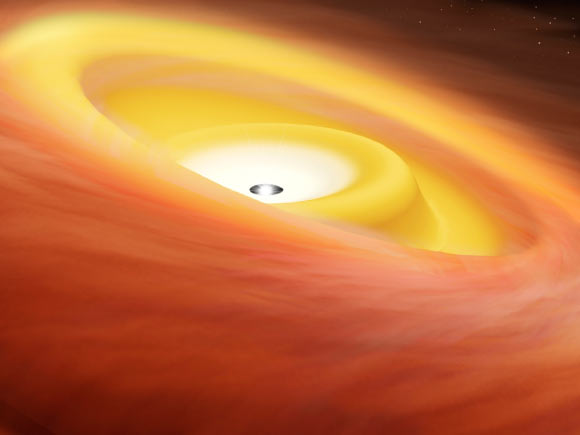Astronomers using the Atacama Large Millimeter/submillimeter Array (ALMA) have observed a warped disk around a recently-formed protostar.
In the Solar System, the orbits of the four inner planets, the asteroid belt, and the gas giants are within a few degrees of the same plane. This plane is also very close to the plane of the Sun’s equator.
Recent studies have revealed that the orbital planes of extrasolar planets are not always aligned with one another or with the equatorial plane of the central star.
One explanation for this is that some of the planets might have been affected by collisions with giant planets and/or companion stars.
However, the possibility remained that such planets were born in a warped protostellar disk.
Recently, images of protoplanetary disks have in fact showed such warping. But it was still unclear how early this happened.
Now, a team of astronomers from the RIKEN Cluster for Pioneering Research and Chiba University in Japan has discovered that IRAS 04368+2557 — an infant protostar embedded within the molecular cloud L1527 at a distance of 447 light-years — hosts an edge-on disk with two misaligned parts.
The inner and outer parts of the disk have slightly different orbital planes, connected at 40 to 60 AU (astronomical units) from IRAS 04368+2557, but the disk has point symmetry with respect to the position of the protostar.
“This observation shows that it is conceivable that the misalignment of planetary orbits can be caused by a warp structure formed in the earliest stages of planetary formation,” said team leader Dr. Nami Sakai, a researcher at the RIKEN Cluster for Pioneering Research.
“We will have to investigate more systems to find out if this is a common phenomenon or not.”
“The remaining question is what caused the warping of the disk,” she said.
“One possibility is that irregularities in the flow of gas and dust in the protostellar cloud are still preserved and manifest themselves as the warped disk.”
“A second possibility is that the magnetic field of the protostar is in a different plane from the rotational plane of the disk, and that the inner disk is being pulled into a different plane from the rest of the disk by the magnetic field.”
“We plan further work to determine which is responsible for the warping of the disk.”
The research is published in the journal Nature.
_____
Nami Sakai et al. A warped disk around an infant protostar. Nature, published online December 31, 2018; doi: 10.1038/s41586-018-0819-2








